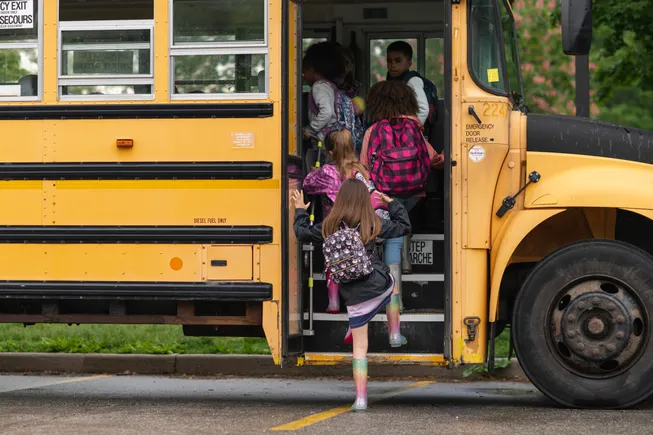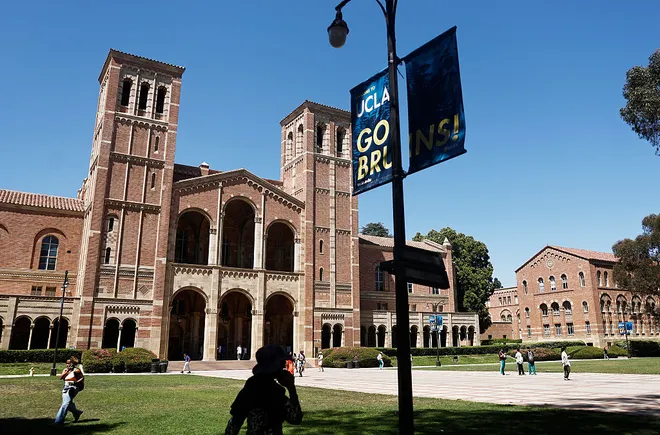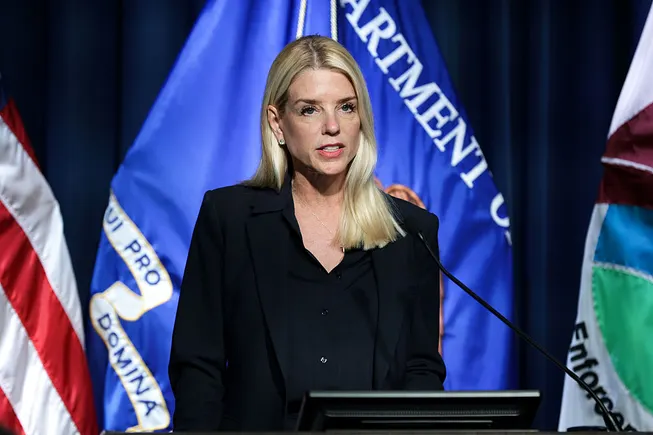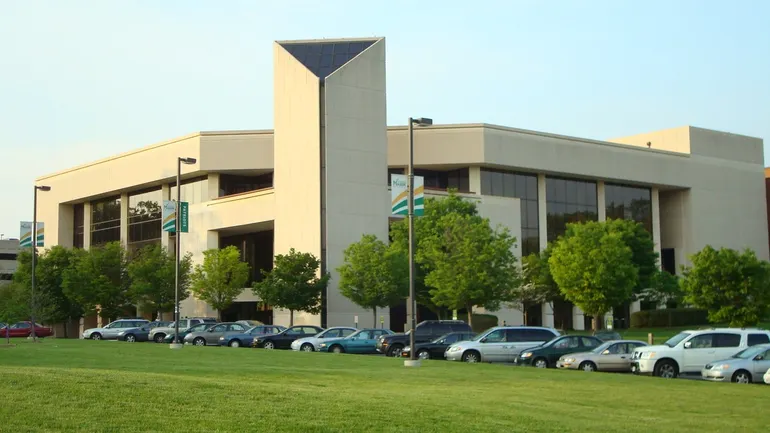Before Donald Trump retook office, advocates of a more demographically diverse U.S. professoriate were already criticizing existing hiring efforts as inadequate. One late-2022 paper in Nature Human Behaviour noted that, at recent rates, “higher education will never achieve demographic parity among tenure-track faculty.”
One example of the disparity: As of November 2023, only 8 percent of U.S. assistant professors were Black, according to the College and University Professional Association for Human Resources. That’s significantly less than Black representation in the U.S. population, currently estimated by the Census to be 13.7 percent. And the CUPA-HR data showed that the Black share of tenure-track and tenured professors decreases as rank increases—only 5 percent of associate professors and 3.6 percent of full professors were Black.
Efforts that institutions have made to racially diversify their faculties drew political backlash well before Trump regained the White House, with activists, organizations and some faculty criticizing university hiring practices and state legislatures passing laws banning affirmative action and/or diversity, equity and inclusion initiatives. The goal of a more representative faculty slipped further out of reach starting on Inauguration Day, when Trump issued executive orders targeting DEI, including what he dubbed “illegal DEI discrimination.”
His administration’s crusade has continued, including with a letter Friday demanding that Harvard University end all DEI initiatives, “implement merit-based hiring policies” and “cease all preferences based on race, color, religion, sex, or national origin throughout its hiring, promotion, compensation, and related practices.” (Harvard has refused to comply with Trump’s orders, which go far beyond hiring, and the federal government has frozen part of the university’s funding and threatened its tax-exempt status.)
Given the current political situation—not just nationally, but also among the growing number of states with DEI and/or affirmative action restrictions—how can higher ed institutions continue to diversify their faculties?
“I think that’s the question of the day: What’s lawful, what’s legal, what might subject an institution to investigation by the investigatory arms of the federal government?” said Paulette Granberry Russell, president and chief executive officer of the National Association of Diversity Officers in Higher Education, which is among the organizations suing over Trump’s anti-DEI executive orders.
“Is it purposeful that this administration has chosen ambiguity?” Granberry Russell asked. “Or left [us] to guess what they intend by ‘illegal DEI’? Is diversifying our campuses on its face illegal DEI?”
So far, the administration has not clarified where the line is. On Feb. 14, the U.S. Education Department published a Dear Colleague letter declaring that the department interprets the Supreme Court’s 2023 decision banning race-conscious admissions as applicable to other areas of higher ed, including hiring, promotion and compensation. That letter is facing legal challenges. The department later released a frequently-asked-questions document further explaining its position, but that guidance didn’t discuss hiring practices.
In response to a request for an interview and written questions, Harrison Fields, special assistant to the president and principal deputy press secretary, wrote in an email to Inside Higher Ed, “President Trump is working to Make Higher Education Great Again by ending unchecked anti-Semitism and ensuring federal taxpayer dollars do not fund higher education institutions’ support for dangerous racial discrimination or racially motivated violence. Any institution violating Title VI is, by law, ineligible for federal funding.” (Title VI bans discrimination based on, among other things, shared ancestry, including antisemitism.)
Madi Biedermann, deputy assistant secretary for communications at the U.S. Education Department, told Inside Higher Ed, “It is illegal to make decisions on the basis of race.”
She said the department isn’t providing any additional guidance at this point beyond the text of the executive orders, the Dear Colleague letter, the FAQ, Title VI of the Civil Rights Act of 1964 and the 2023 Supreme Court ruling.
Also, in an FAQ titled “What You Should Know About DEI-Related Discrimination at Work,” the U.S. Equal Employment Opportunity Commission writes that, under Title VII of the Civil Rights Act, DEI “practices may be unlawful if they involve an employer or other covered entity taking an employment action motivated—in whole or in part—by an employee’s or applicant’s race, sex, or another protected characteristic.” In addition, it says that Title VII’s protections aren’t just for minority groups.
Adrianna Kezar, a professor of higher education and director of the Pullias Center for Higher Education at the University of Southern California, said in an email that there isn’t “universal understanding” across campuses of the current hiring rules.
“In states like California (and others), affirmative action in hiring is illegal. In other states, it remains legal until the Trump dear colleague letter becomes the legal interpretation,” Kezar wrote. But she said some states “are already complying even though that has not become the law of the land.”
“Right now, everything is still murky,” she added.
Tres Cleveland, a partner at the Thompson Coburn law firm who represents higher education clients, said most of them are trying to stay “in the good graces of the Department of Education or other regulators, and it’s a challenge at this point.” Cleveland said the “rules of the road” are “changing almost daily.”
Damani White-Lewis, an assistant professor at the University of Pennsylvania Graduate School of Education, said, “There’s genuinely no consensus” on what’s barred under the Trump administration with regard to hiring that wasn’t prohibited before.
“I wanted to do a project of: If you asked, like, 10 different legal counsels, what sorts of answers would they come to and how did they make sense of them?” White-Lewis said. “Because that’s just how different folks are, and some are more conservative, some are a little more progressive on this issue.”
For colleges and universities, faculty diversification isn’t just an end in itself; studies have found positive benefits for students. So, what can institutions do to continue diversifying faculties? Experts pointed to fundamentals such as active recruiting, structured hiring processes and more.
Casting a Wide Net
While Granberry Russell of NADOHE criticized the Trump administration’s “ambiguity,” she said that actively seeking a diverse applicant pool still seems acceptable. In recruitment, she said, “you’re not making a decision; you’re just saying, ‘Apply for this position.’”
“There’s nothing, at least on its face, that would appear to prohibit recruitment efforts,” she said. (The Education Department has, however, targeted dozens of universities for allegedly supporting the PhD Project, which was accused of barring white or Asian prospective doctoral students from a recruitment conference.)
Kezar, at the University of Southern California, wrote in an email that while recruitment strategies still seem to be a viable way to attract diverse candidates, “some of the approaches that people have been relying on, they don’t feel comfortable with because they are being targeted.”
Granberry Russell echoed this concern, saying that, out of fear of investigations, “people are being very, very conservative in how they approach faculty searches.”
Denise Sekaquaptewa, director of the University of Michigan’s ADVANCE Program, a faculty diversity initiative, wrote in an email that “approaches which may still be viable” include disseminating job announcements “to outlets where [they] may reach a wide range of excellent candidates.”
White-Lewis, of the Penn Graduate School of Education, said there’s a “pervasive myth” that there aren’t enough graduate students of color to diversify faculties. He called it a “no-brainer” for institutions to invest in postdoctoral fellows and postdoctoral researchers—a stepping-stone to permanent faculty jobs.
“That’s a very perceivably neutral avenue of thinking about how we can increase opportunities for postdoctoral funding—given their crucial nature within not just medicine but other STEM fields as well, where postdocs are more pervasive,” White-Lewis said. “And that gives everybody more opportunities to research, write and publish and become more competitive for faculty jobs.”
He said he thinks postdoctoral programs “specifically devoted to minoritized hiring” will be difficult to continue. Multiple experts Inside Higher Ed interviewed suggested institutions should avoid saying in any faculty job advertisements that they’re specifically seeking to hire faculty of color or of a specific race.
“The devil is all in the details with this,” said Scott Goldschmidt, another higher ed specialist partner at Thompson Coburn. He said institutions have to weigh the risks of litigation and administrative action, especially when it comes to public job ads.
Goldschmidt said there are other hiring considerations that job ads could include that might lead to diverse hires, such as socioeconomic status and experience working with diverse populations. But he believes the Trump administration would also argue that such factors can’t be used as proxies for race. The hiring criteria should be narrowly tailored to the job, and the search and hiring process must be conducted in a race-neutral manner, Goldschmidt said.
“It has to be a truly open process,” he said. “The conditions there can’t be there to kind of serve as a way to unlawfully discriminate.”
White-Lewis suggested that faculty searches consider evaluating applicants’ experience with mentoring marginalized populations first. But that doesn’t mean their teaching and research records should be discounted.
“It’s very difficult to be a mentor if you don’t have research funding, right?” he said. “And so these things go hand in hand. What I’m suggesting is to make the evaluation of mentoring capabilities noteworthy instead of it being subsidiary.”
He also said that, when considering what positions to hire, administrators and faculty should think about how to align the department’s needs—in research, teaching and service—with areas where minoritized scholars are more represented.
“It’s not always just going after Indigenous studies or ethnic studies or Africana studies, because that clumps diversity within a few departments, but psychology, English, sociology, arts, even biology in terms of health disparities,” White-Lewis said. “Health disparity searches have been the thing that have historically driven faculty diversity in the sciences, and it can still continue because health disparities still exist.”
Some said using diversity statements in hiring is likely a no-go under the Trump administration, whose demands to Harvard included abolishing in hiring practices “all criteria, preferences, and practices” that “function as ideological litmus tests”—a common critique of diversity statements. Republican-controlled legislatures in multiple states have banned them.
“They’re dead,” said Musa al-Gharbi, a research fellow at Heterodox Academy and an assistant professor in Stony Brook University’s School of Communication and Journalism. He noted that even the University of California system has stepped away from them.
Furthermore, al-Gharbi said, “A lot of this stuff which is now rendered illegal … doesn’t really work well anyway. Some of the efforts that we take to promote diversity, equity and inclusion in higher ed actually create a hostile environment for the same people that we’re trying to include.”
He said that people of color and people from lower-income backgrounds are more likely to be socially conservative and religious than people who are currently better represented in academe, adding that “some of these diversity challenges around viewpoint diversity and demographic diversity are actually intimately interrelated.”
“But we also should nonetheless advocate for the goals of diversity and inclusion” and try to think up better alternatives, al-Gharbi said. Still, that’s hard when the Trump administration has basically “villainized,” “censored” and “demeaned” anything associated with DEI.
“This isn’t a smart bomb,” he said. “It’s a chain saw.”










